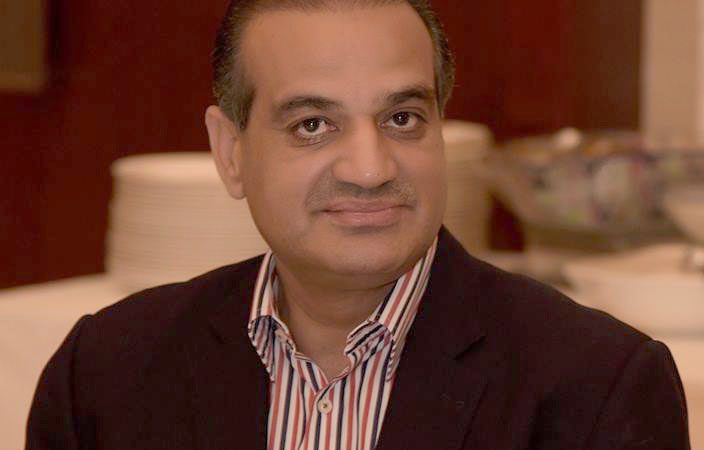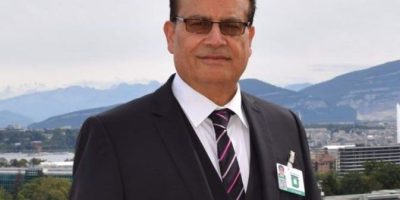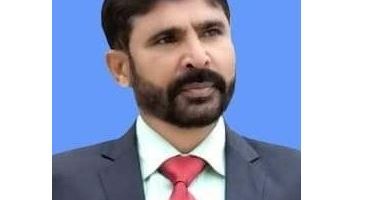Challenges ahead for Shehbaz Sharif govt

Comment
Ansar Mahmood Bhatti
Prime Minister Shehbaz Sharif is poised to embark upon a transformative journey, drawing inspiration from his previous leadership during the PDM government. As he resumes his responsibilities, he aims to build on the lessons learned and address the challenges that marred his previous 16-month tenure.
Acknowledging the allegations of misgovernance and political victimization that clouded the past, Prime Minister Shehbaz Sharif is committed to fostering a transparent and accountable administration. Learning from past experiences, his government would like to prioritize effective governance, ensuring that the needs and aspirations of the people take center stage.
The challenges faced during the previous tenure have provided valuable insights into areas that require improvement. Prime Minister Shehbaz Sharif is determined to institute reforms that enhance governmental efficiency, curb corruption, and promote inclusivity. By fostering a climate of fair play and equal opportunities, his administration should seek to dispel any lingering doubts about political victimization.
Recognizing the pivotal role of opposition parties in a thriving democracy, the new government under Shehbaz Sharif ought to aim to promote a culture of constructive dialogue. Embracing inclusiveness and open communication channels, the administration must seek to bridge the gap between different political entities, creating a more collaborative and cooperative political landscape.
While the PTI has emerged as a popular party, the Shehbaz Sharif-led government would like to present itself as a compelling alternative. By addressing the concerns that contributed to the rise of the PTI, such as governance lapses, the new administration aims to regain public trust and demonstrate a commitment to the welfare of the nation.
Enhancing political stability should be the foremost priority for Prime Minister Shehbaz, recognizing that a stable political environment is crucial for the successful completion of his tenure. Notably, Pakistan has witnessed a historical trend where no prime minister has managed to serve a full term, even those with a two-thirds mandate faced premature exits. In this context, the Shehbaz government faces a particularly challenging scenario, with its sustainability heavily reliant on the support of allied parties.
The pervasive issue of corruption poses the most formidable challenge for Shehbaz Sharif. Without effectively curbing corruption, the prospect of steering the country towards progress remains elusive. Unfortunately, both the PML-N manifesto and the Prime Minister’s maiden address to the National Assembly fell short of addressing this pressing threat. It is noteworthy to acknowledge KPK Chief Minister Ali Amin Gandapur for his commendable initiative. He compelled all PTI lawmakers to take a solemn oath, pledging their commitment to abstain from corrupt practices and to prevent others from engaging in corruption.
While the effectiveness of this pledge in eradicating corruption in the province remains uncertain, the very act of making such a commitment underscores the high moral standards that the PTI aspires to establish in its governance. The pertinent question now arises: Do other provincial assemblies and the national assembly possess the moral courage to undertake similar vows? The future of our nation’s progress hinges on our collective commitment to address and eliminate corruption at every level of governance.
China has consistently demonstrated a proactive approach in extending warm greetings to Shehbaz Sharif upon his election as the Prime Minister of Pakistan. The immediacy of Chinese engagement can be attributed to the historical precedent of flourishing bilateral relations whenever the Pakistan Muslim League-Nawaz (PML-N) assumed power. Both Nawaz Sharif and Shehbaz Sharif successfully cultivated personal relationships with Chinese leadership, fostering mutual trust and cooperation.
During PML-N tenures, China staunchly supported Pakistan, contributing to the elevation of bilateral ties to unprecedented levels. However, this close association also stirred feelings of envy and apprehension among other political parties, notably the Pakistan Tehreek-e-Insaf (PTI). Consequently, the transition of power to PTI marked a notable downturn in China-Pakistan relations.
The strained relations under PTI rule underscored the challenges of maintaining the same level of warmth and collaboration witnessed during PML-N’s tenure. This shift highlights the delicate nature of international relationships, where personal connections between leaders play a pivotal role. It remains to be seen how the dynamics between China and Pakistan will evolve under the current political landscape and whether efforts can be made to rebuild and strengthen the bond that has historically existed between the two nations.
The current scenario on the ground reveals a significant stagnation in all projects associated with the China-Pakistan Economic Corridor (CPEC). Remarkably, these projects have been at a standstill since the tenure of the Pakistan Tehreek-e-Insaf (PTI) government. With the recent formation of a government that maintains a positive relationship with China, there is a heightened anticipation that bilateral relations will undergo a complete restoration, paving the way for the revival of CPEC initiatives.
In terms of our relationship with the IMF, the current government appears to be well-positioned and unlikely to encounter significant challenges. It’s crucial to acknowledge that the IMF’s decision-making process is multifaceted, involving both economic and political considerations. Fortunately, the present administration enjoys robust support from both the national and international establishments, further strengthening its standing. Given the solid backing, the release of the IMF tranche is expected to proceed smoothly.
The genuine challenge, however, seems poised to arise from the domestic sphere. The apparent surge in prices is undeniably exacting a substantial toll on a broad spectrum of the population. The survival of the middle and lower-middle class has unquestionably become a formidable challenge in Pakistan. In navigating these economic hardships, the current government must orchestrate transformative measures to shift the momentum in its favor.
The key lies in implementing innovative strategies that have the potential to alleviate the burden on the citizens. It necessitates a proactive approach that goes beyond the conventional methods employed during the 16-month tenure of the previous PDM government.
If all unfolds as anticipated, the Shehbaz government is poised to maintain unimpeded governance for at least a year and a half. However, a pivotal juncture awaits in November 2025 with the impending appointment of the army chief. The dynamics between the PML-N and the Establishment, currently in a state of camaraderie, might witness a shift post the crucial decision – be it a new appointment or an extension.
Historically, Pakistan has not witnessed a prime minister completing a full five-year term. This entrenched tradition appears likely to persist unless the Shehbaz government can orchestrate a remarkable transformation, not only stabilizing the political landscape but also effecting a substantial turnaround in the economy.
The writer is the Editor Daily Islamabad POST/Centreline journal.
Related News

Will 2026 be better — or worse?
Qamar Bashir The year 2025 will be remembered as one of the most turbulent inRead More

Russian Economy and Discontents
Dr. Muhammad Akram Zaheer By 2025, Russia’s war-driven economy has entered a phase marked notRead More


Comments are Closed